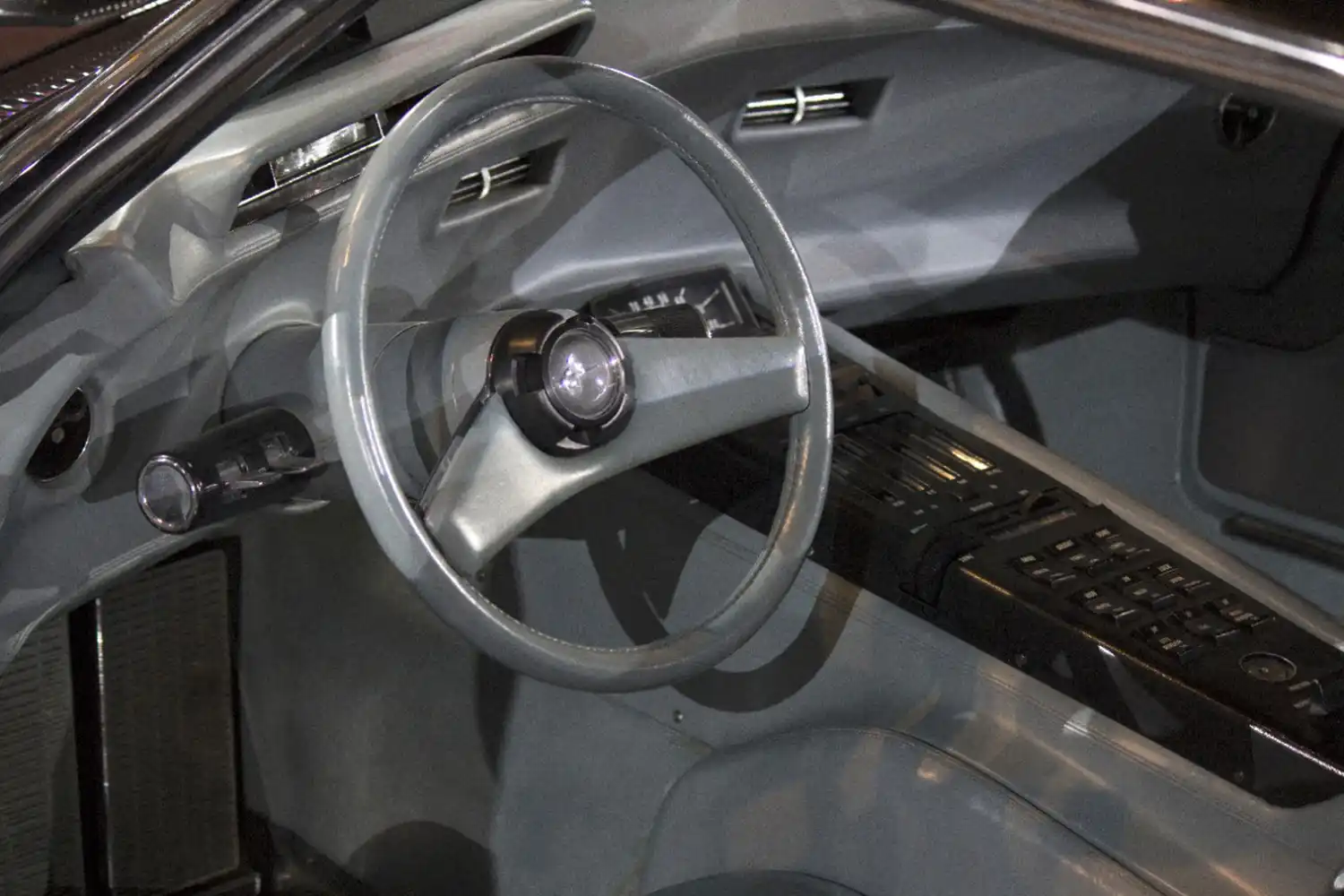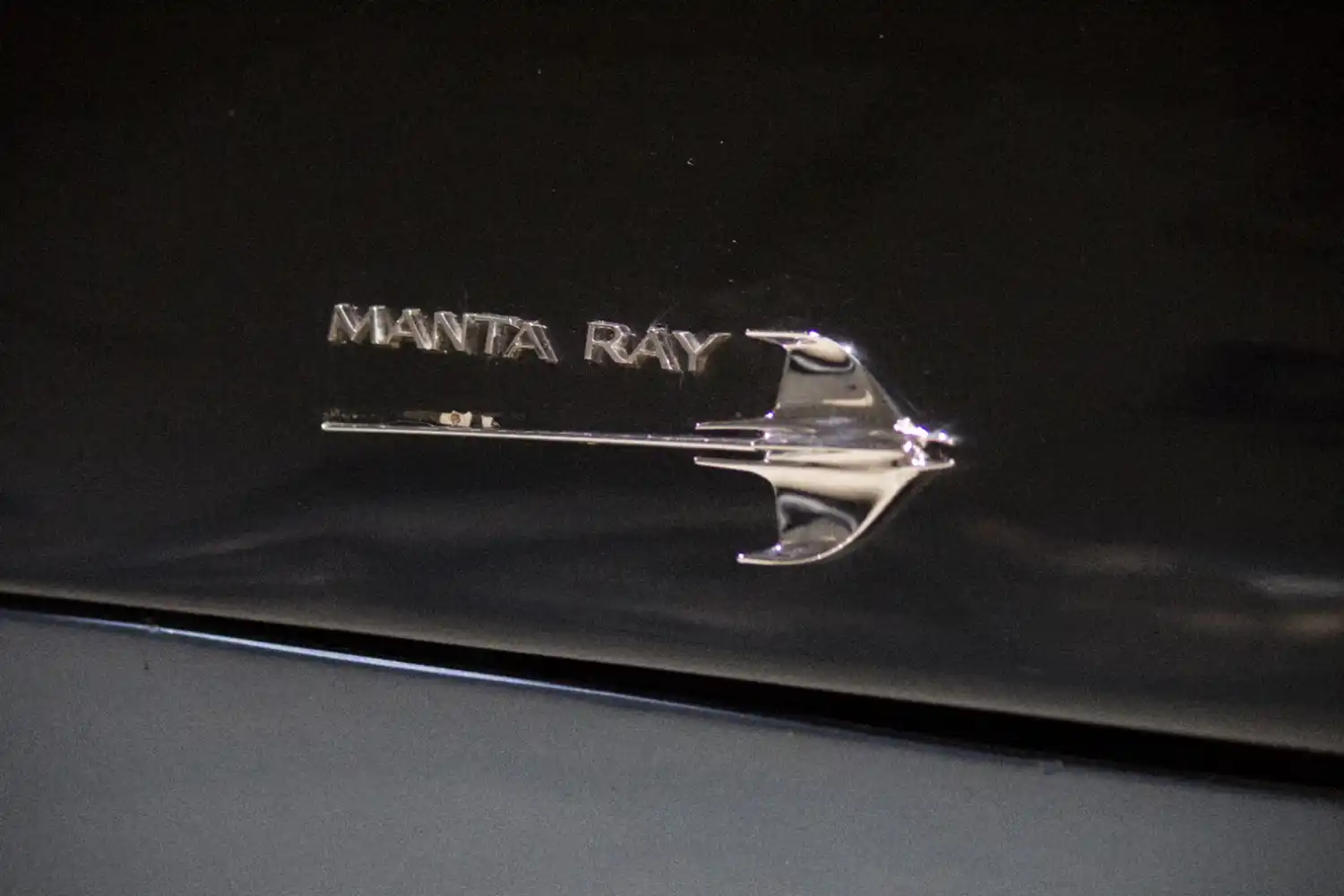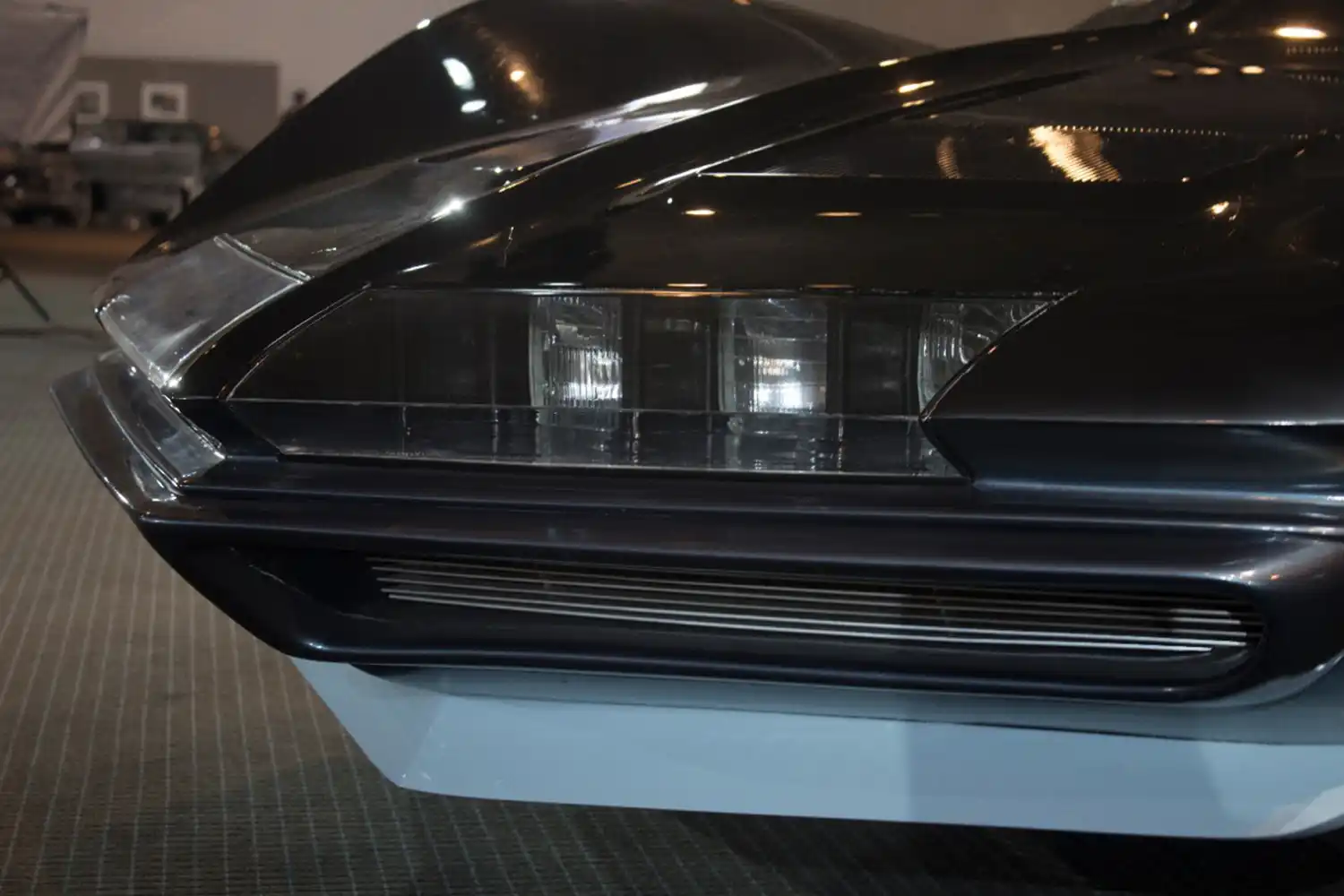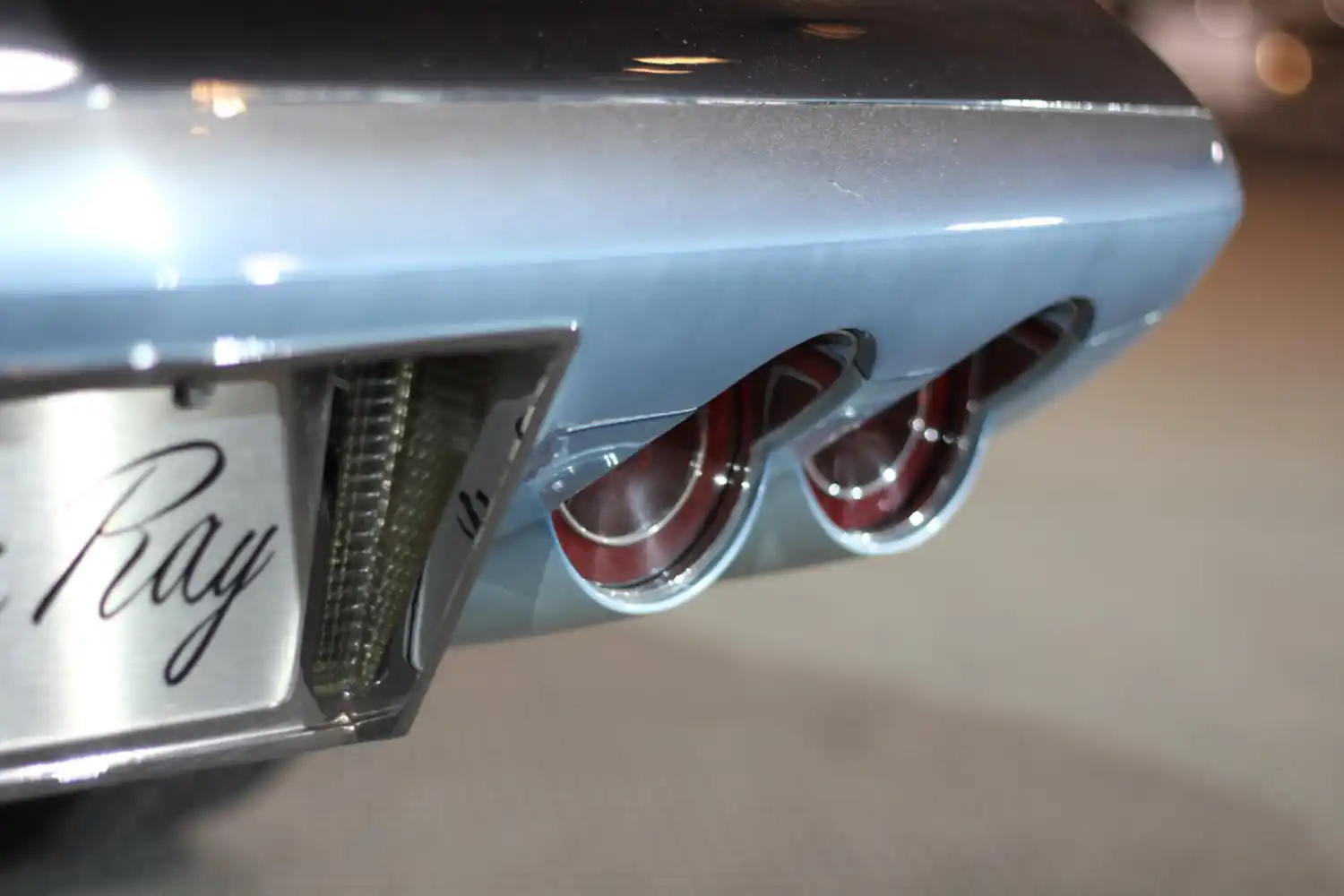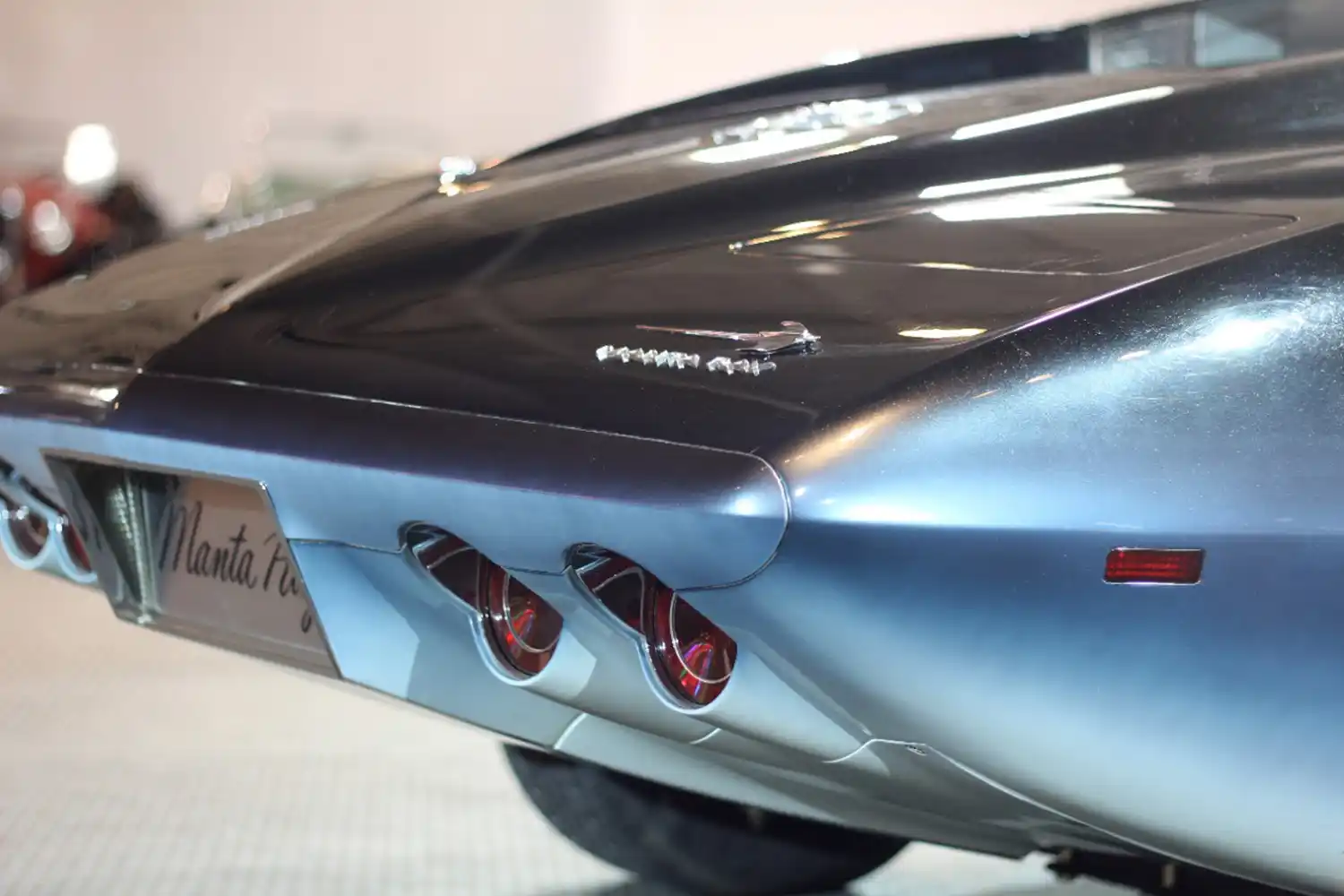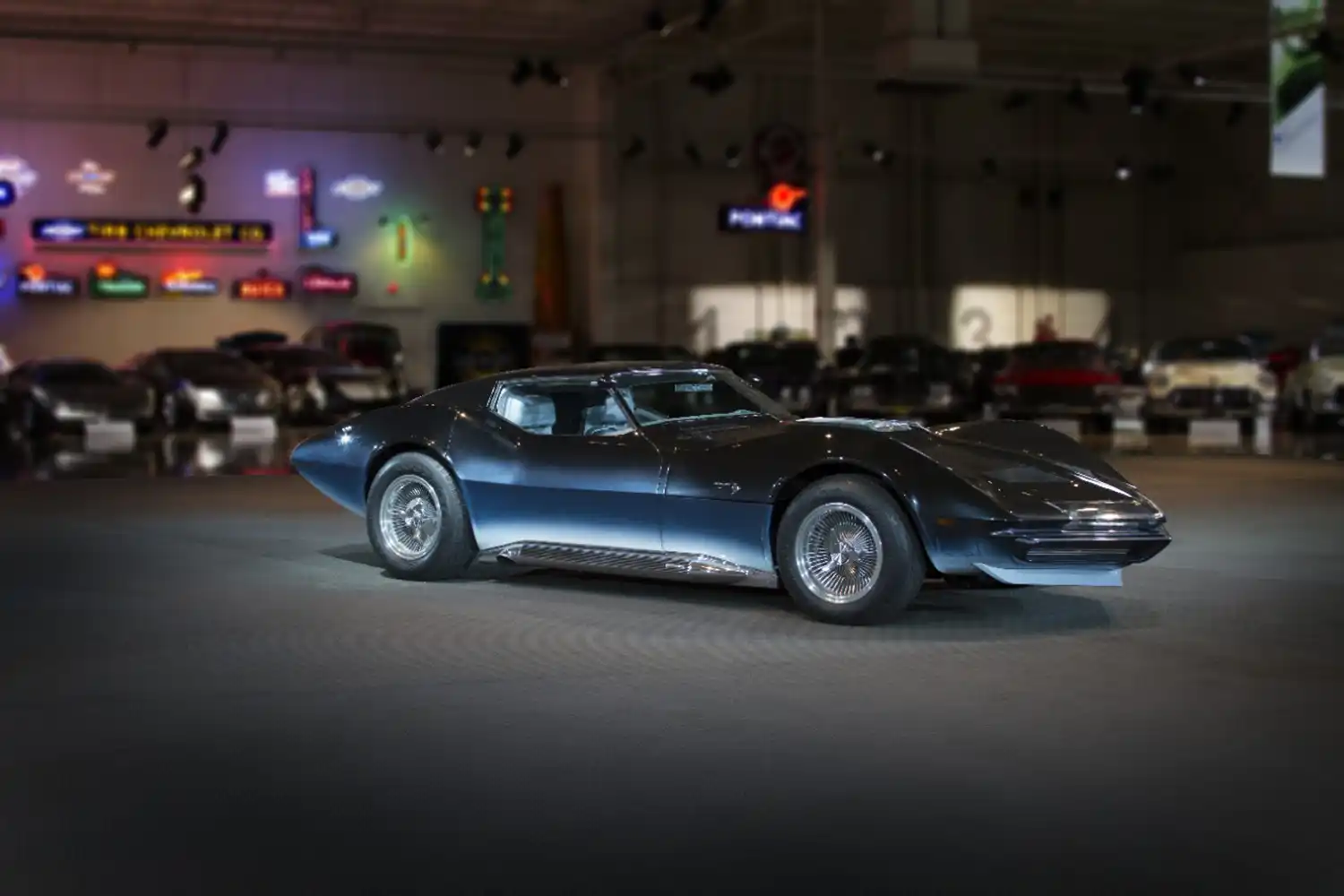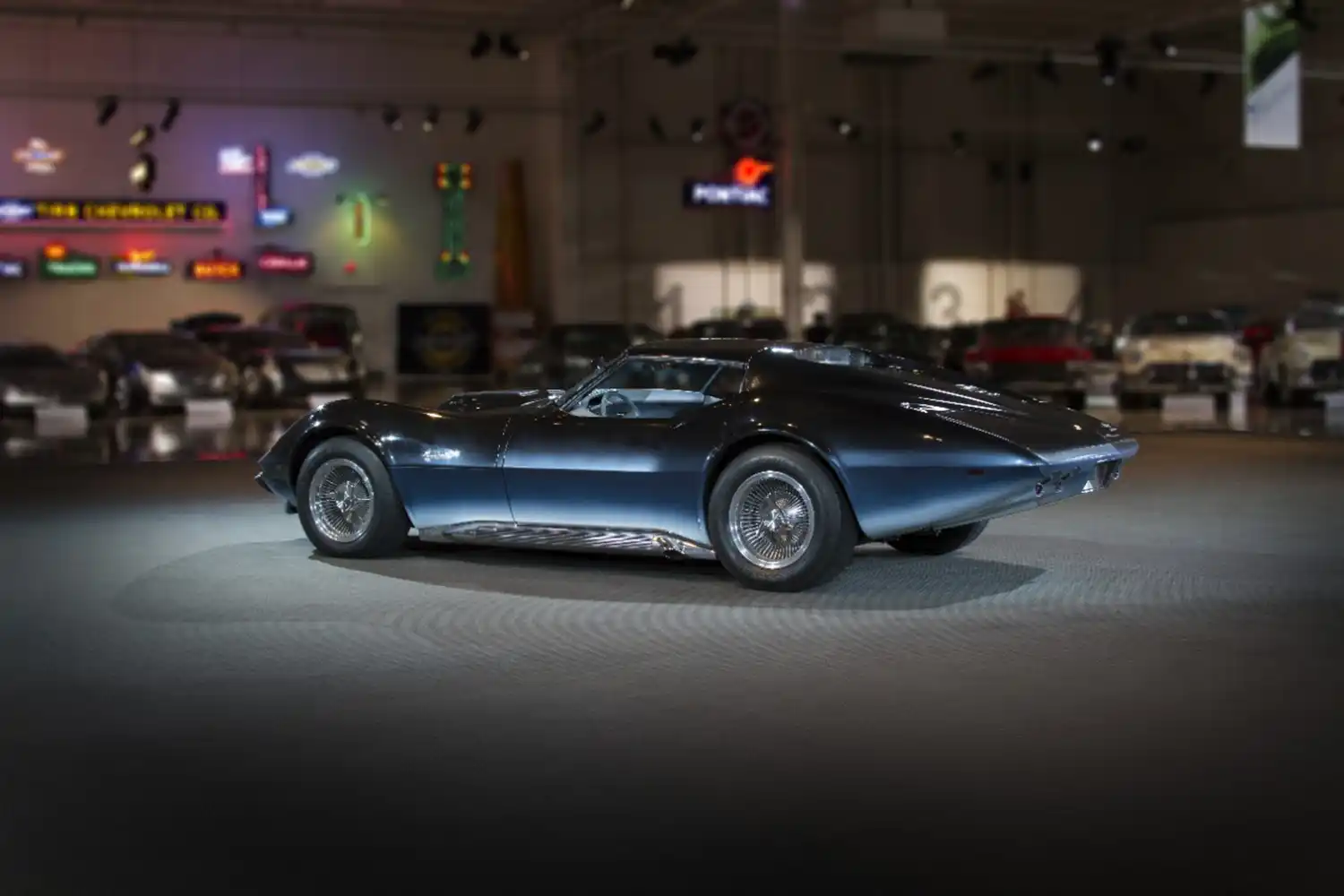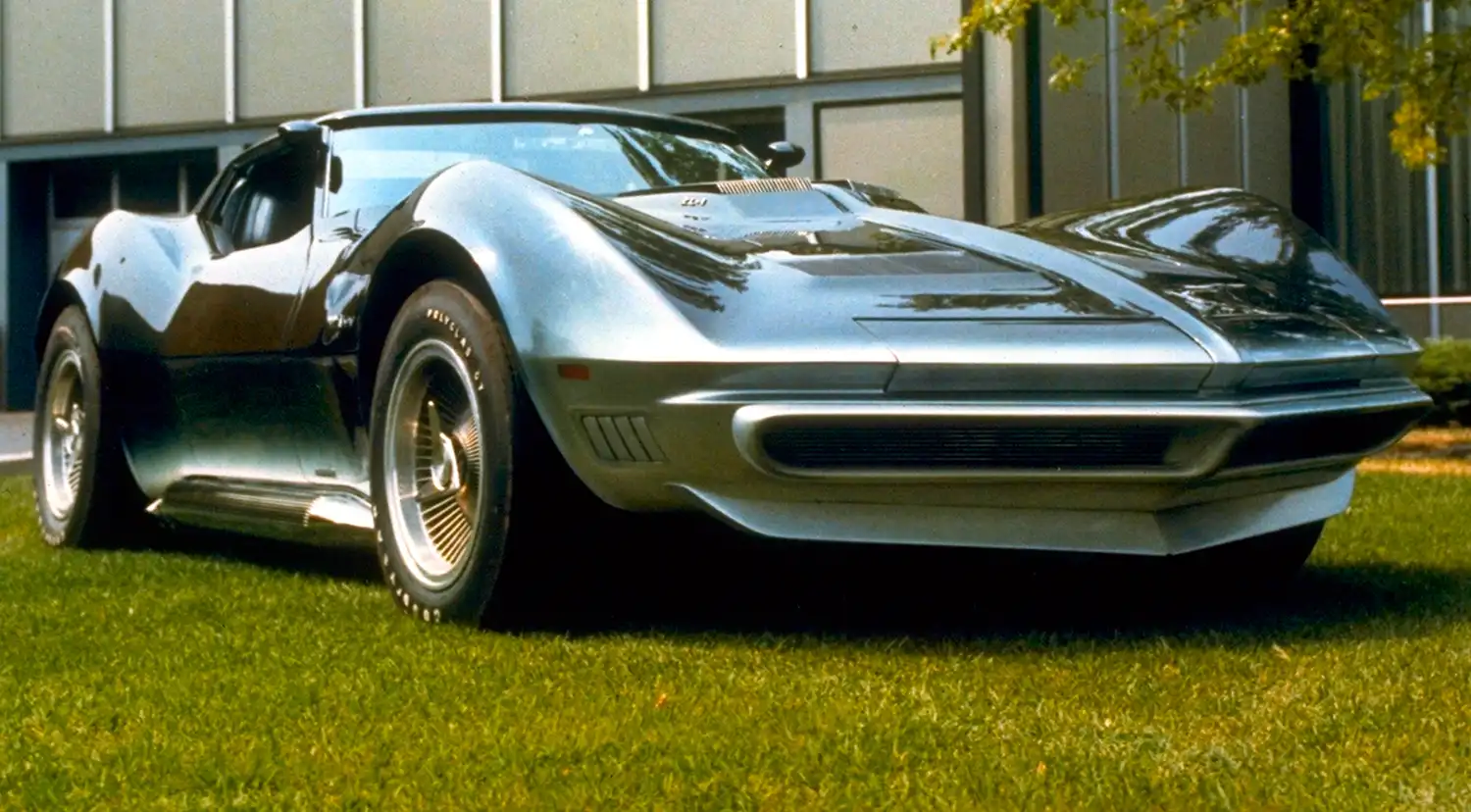
The 1969 GM Manta Ray stands as a fascinating testament to the automotive design trends of the late 1960s, directly evolving from the striking 1965 Mako Shark II concept. This transition, overseen by the influential head of GM Design Staff, William Mitchell, was deeply inspired by the natural world, specifically the graceful and powerful movement of the manta ray through the ocean. Mitchell, an avid deep-sea fishing enthusiast with a profound appreciation for nature’s forms, envisioned a vehicle that captured the essence of this majestic creature, leading to the renaming and refinement of the Mako Shark II into the car that would become known as the Manta Ray. This “Stingray” styling “Dream Car” embodied a futuristic vision while incorporating elements that hinted at potential production feasibility.
Design Evolution: The Manta Ray represented a further step towards a more production-oriented design compared to its predecessor. While still undeniably a concept car with its low-slung profile and dramatic lines, it featured revised elements intended to be more realistic for potential future vehicles. The sleek, shark-like front end, a hallmark of the Mako Shark lineage, was retained and subtly refined. The flowing lines that stretched across the car’s body emphasized its dynamic and aquatic inspiration, creating a sense of motion even when stationary.
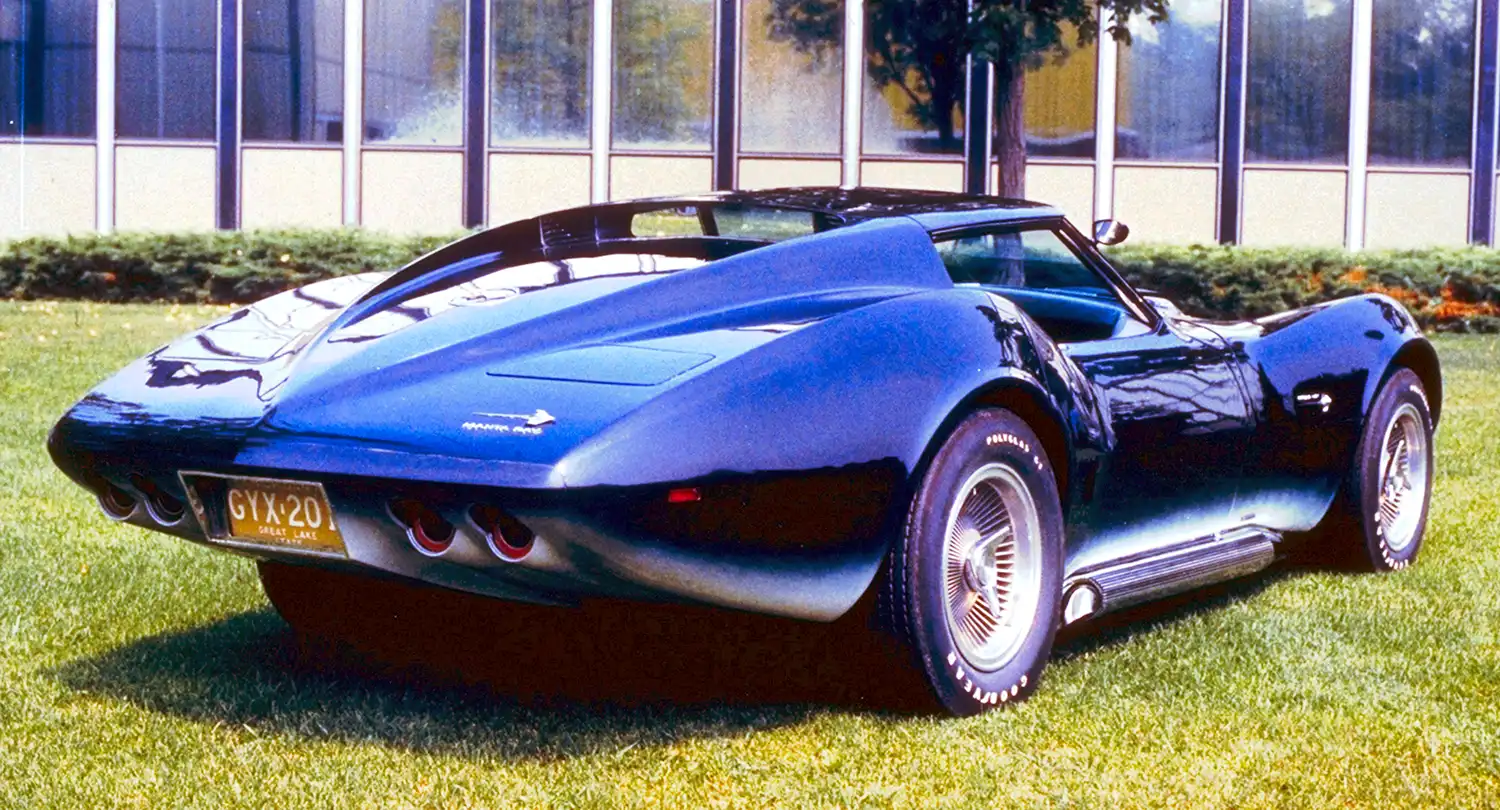
Unique Features: One of the most distinctive features of the Manta Ray was the inclusion of more production-realistic side pipes, a popular styling cue of the era that suggested performance and power. Furthermore, the concept incorporated innovative twin rear-deck-mounted doors. These doors were not just for access; they were designed to pop up under hard braking, revealing reflective surfaces that would act as auxiliary brake lights, a novel safety feature that showcased the forward-thinking approach of GM’s designers.
Interior Vision: While specific details about the interior are less widely documented than its exterior styling, concept cars of this era often featured futuristic instrumentation, driver-focused cockpits, and advanced materials. The Manta Ray likely incorporated design elements that hinted at the future of automotive interiors, emphasizing both style and functionality within its low and sporty cabin.
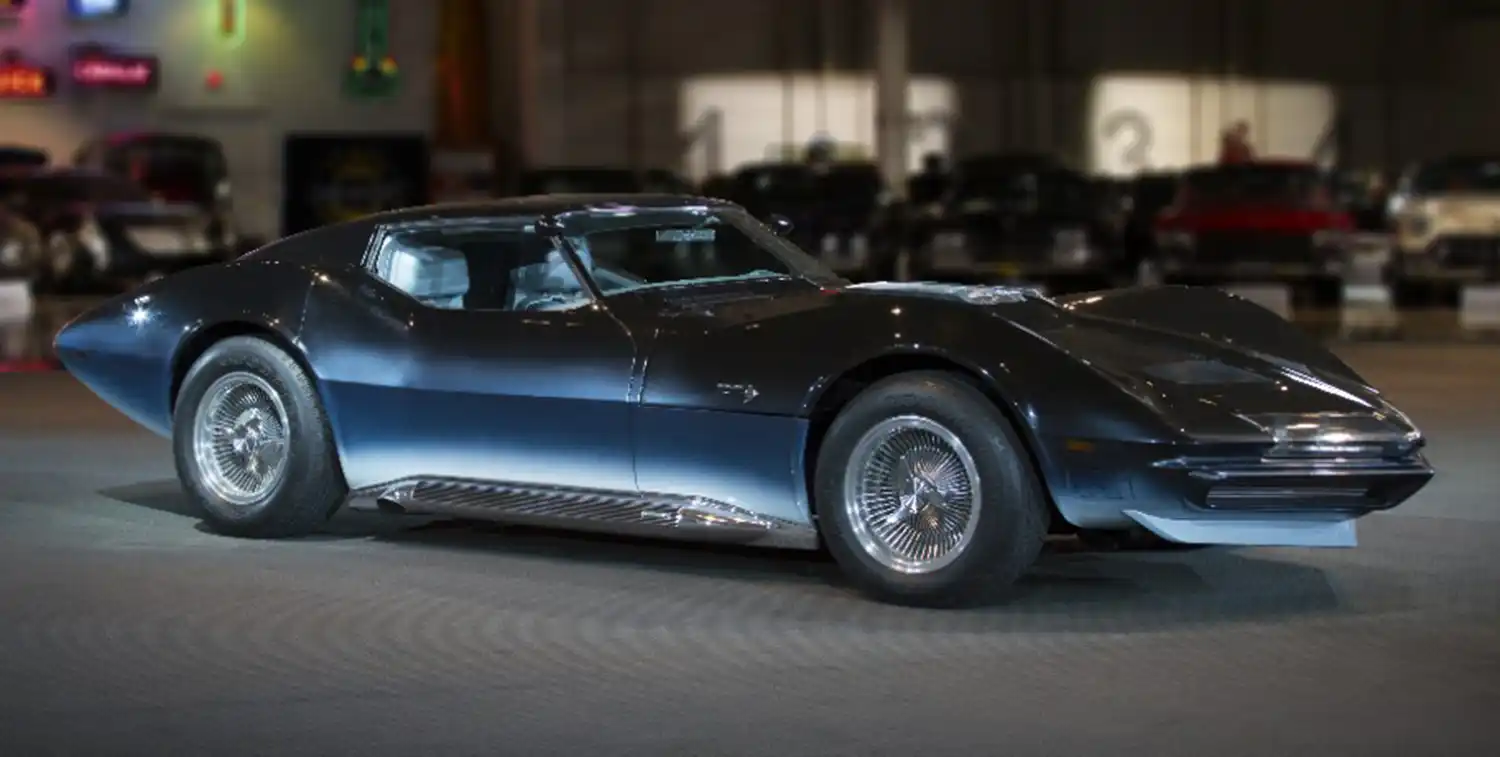
Power and Performance: Although the Manta Ray was primarily a design exercise, the spirit of performance was undoubtedly part of its DNA, inherited from the Corvette lineage and the powerful imagery of its marine namesake. While exact engine specifications for the concept car itself might vary in available records, it’s reasonable to assume that it would have been envisioned with a potent GM V8 engine, reflecting the era’s fascination with high-performance powertrains. This would have translated to impressive theoretical performance figures, aligning with the car’s aggressive and dynamic styling. The focus was on conveying a sense of power and speed, even if the actual prototype’s powertrain was not the primary development focus.
Legacy and Influence: The GM Manta Ray, though never intended for production, played a significant role in shaping the design language of future General Motors vehicles. Its sleek lines, aggressive stance, and innovative features served as inspiration for subsequent models and contributed to the ongoing evolution of automotive styling. The Manta Ray remains a celebrated example of the “dream car” era, showcasing the creativity and vision of GM’s design team under William Mitchell’s guidance, forever linking automotive aesthetics with the beauty and power of the natural world.
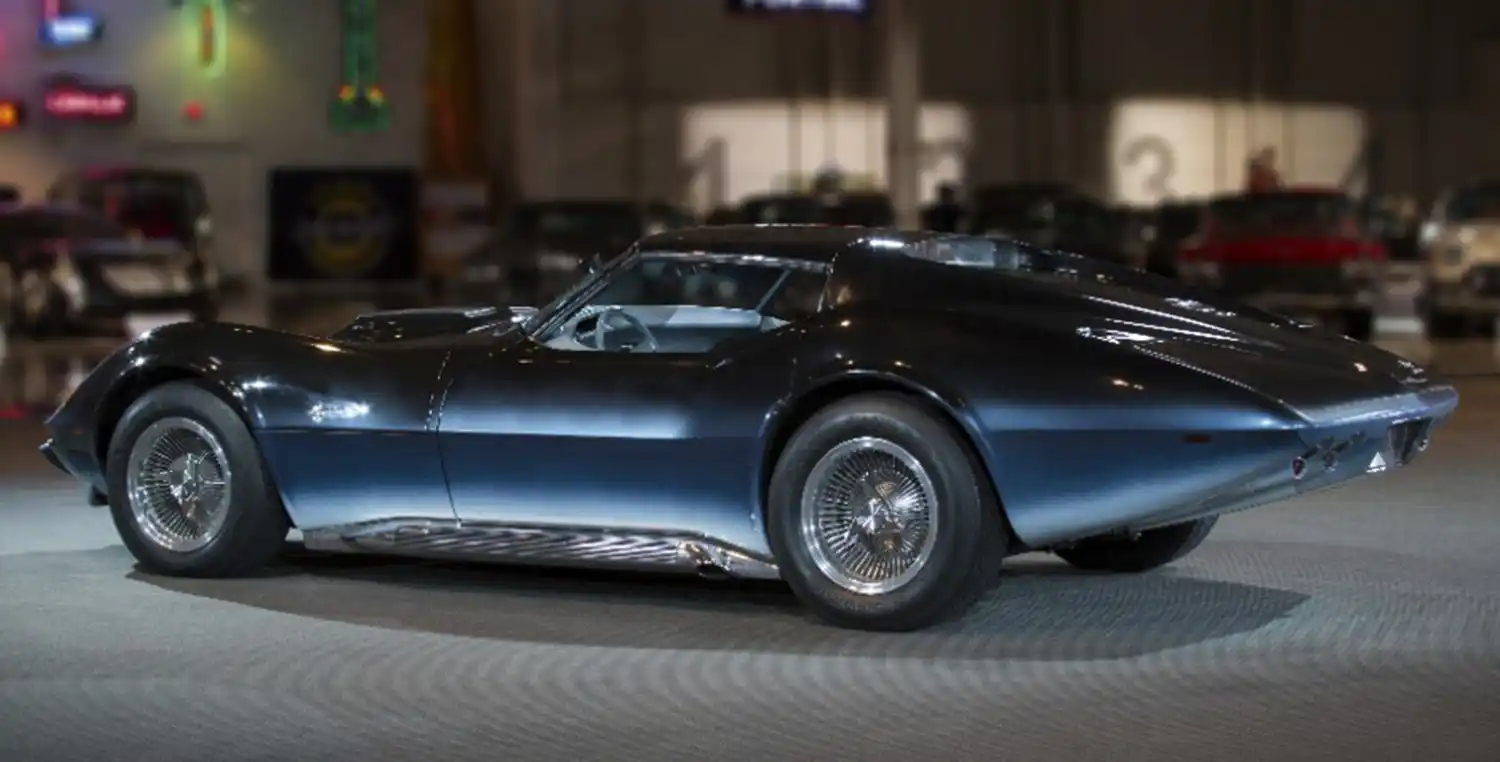
Summary:
- The GM Manta Ray was a 1969 concept car evolving from the 1965 Mako Shark II.
- Its design was heavily influenced by the manta ray, inspired by William Mitchell’s love of nature.
- It featured more production-realistic side pipes.
- A unique feature was the twin rear-deck-mounted doors that acted as auxiliary brake lights during hard braking.
- The car was envisioned with a powerful GM V8 engine, emphasizing performance.
- Although not produced, it significantly influenced future GM designs.
Disclaimer: This article discusses a historical concept car. Actual specifications and performance may have varied, and the vehicle was never available for public purchase.
Source : Chevrolet & GM Heritage
This article was crafted with assistance from Gemini
